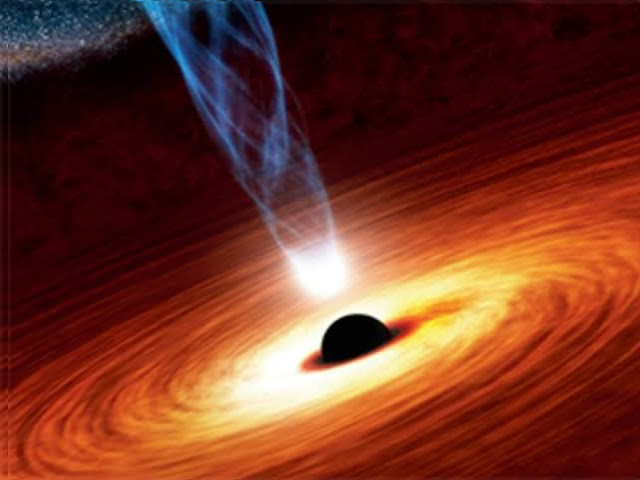Black Hole
Unveiling the Mystery: Black Holes, Formation, Destruction, and Beyond
Black holes are some of the most intresting things in the universe. These dark objects have captivated the imagination of scientists and the public alike for decades, and with good reason. Not only do black holes challenge our understanding of space and time, but they also represent some of the most extreme environments in the cosmos
Black holes are some of the most fascinating and enigmatic objects in the universe. Their immense gravity warps spacetime, swallowing matter and light within their invisible grasp. Let's delve deeper into understanding their formation, potential destruction, and the captivating questions that still linger.
What are Black Holes?
Imagine a point in space where gravity becomes so extreme that not even light can escape its clutches. This is the essence of a black hole. At its heart lies a **singularity**, a region of infinite density where all the mass of the black hole is concentrated to an infinitely small point. Surrounding the singularity is the **event horizon**, a point of no return. Once an object crosses this boundary, its immense pull ensures nothing, not even light, can ever escape.
 |
| Black hole |
Black holes are objects that are so massive and dense that their gravity is strong enough to prevent anything, including light, from escaping their grasp. The gravitational pull of a black hole is so strong that it warps space and time around it, creating a "singularity"
where the laws of physics as we know them break down.
 |
| The result after explosion of black hole |
Black Hole Formation: Stellar Giants Collapsing Inwards
Black holes are born from the dramatic demise of massive stars. When a star runs out of fuel for nuclear fusion, the outward pressure that balanced its own gravity can no longer hold its core in check. This triggers a **gravitational collapse**, causing the star's core to implode upon itself. If the star is at least 5 to 10 times the mass of our Sun, this collapse continues unabated, eventually crushing the core into a singularity and forming a black hole.
Black holes are form when massive stars run out of fuel and collapse under their own weight. The resulting explosion is known as a supernova, can be so powerful that it creates a black hole in the center of the resulting debris. Alternatively, black holes can be formed by the collision of two neutron stars or two black holes.
 |
| Neutron star merge with black hole |
The size of a black hole is determined by its mass, with the most massive black holes being millions or even billions of times more massive than our sun. Despite their size, black holes are incredibly hard to detect directly, as they do not emit any light or radiation that can be picked up by telescopes. Instead, astronomers look for the effects of black holes on nearby objects, such as stars or gas clouds that are being pulled into their gravity well.
One of the most fascinating aspects of black holes is the concept of the event horizon, which is the boundary around a black hole beyond which nothing can escape. The event horizon is the point of no return, and once an object crosses it, it is pulled inexorably towards the singularity at the center of the black hole. This means that anything that enters a black hole, including stars and planets, is destroyed by the intense gravitational forces.
 |
| Black hole radiating energy |
Despite their destructive power, black holes play a vital role in the cosmos. They are thought to be responsible for the formation of galaxies, as their gravity can pull in and compress large amounts of gas and dust, leading to the birth of new stars. They also play a key role in the evolution of the universe, as they can merge together to form even larger black holes, releasing vast amounts of energy in the process.
 |
| Two black holes merge together |
Do Black Holes Truly Destroy Themselves?
While the concept of a point of no return might suggest eternal imprisonment, the universe might have a surprise in store. Stephen Hawking proposed a mind-bending theory about **Hawking radiation**. This is a type of theoretical radiation emitted by black holes due to quantum effects near the event horizon. Over an unimaginably long period, estimated to be trillions of times the current age of the universe, this radiation could theoretically cause the black hole to evaporate completely, leaving behind nothing but a faint echo of its former existence. However, this is purely theoretical, and confirming its existence remains a major challenge.
The Enduring Mystery and Further Exploration
Despite significant advancements in our understanding, black holes remain shrouded in a veil of mystery. We grapple with questions like:
What happens inside a black hole?
The intense gravity makes it impossible to directly observe what happens within the event horizon.
Can anything escape a black hole?
Hawking radiation suggests a potential loophole, but much investigation is needed.
How do supermassive black holes form?
Black holes continue to captivate scientists and the public alike, pushing us to reimagine the boundaries of physics and ponder the very nature of our universe. As we refine our technology and telescopes, unraveling the mysteries of black holes promises to provide even more profound insights into the wonders and complexities of the cosmos.
In conclusion, black holes are some of the most fascinating and enigmatic objects in the universe. They challenge our understanding of space and time, and their extreme gravity and destructive power make them both terrifying and awe-inspiring. While much is still unknown about black holes, ongoing research and technological advances are helping to unlock the secrets of these mysterious objects, and we can only imagine what new discoveries await us in the future.


